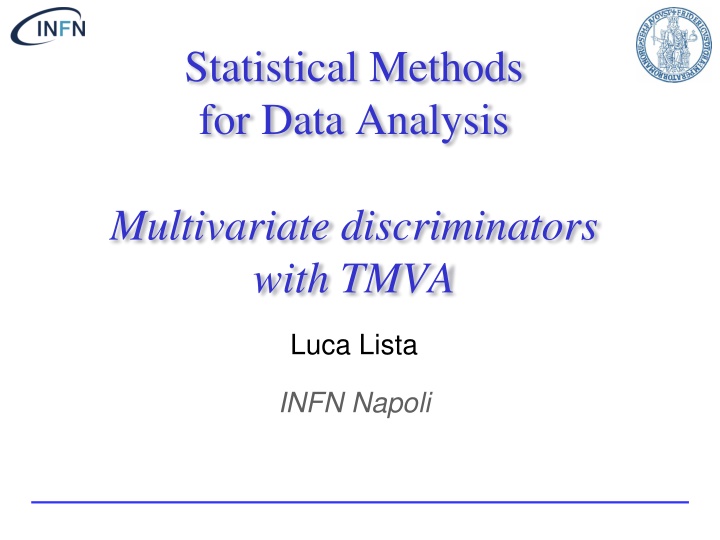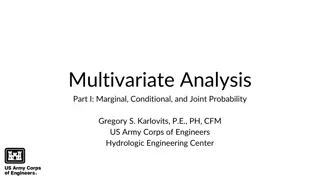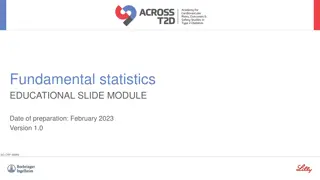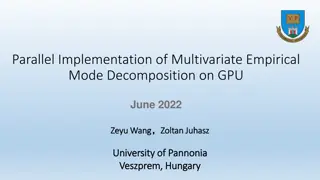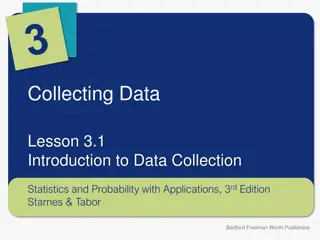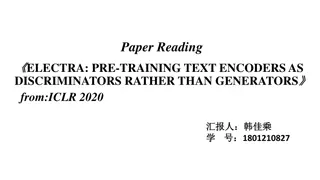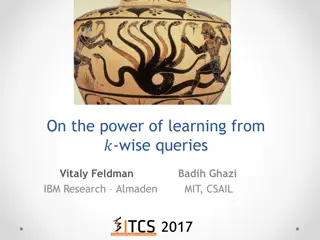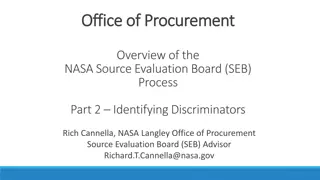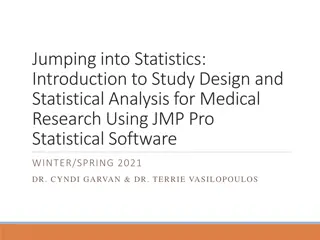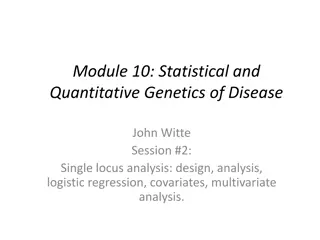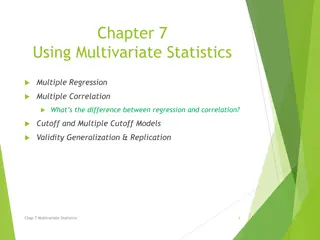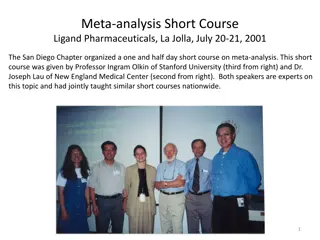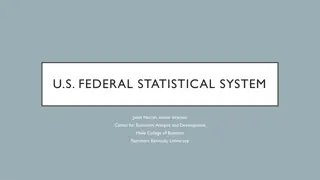Statistical Methods for Multivariate Discriminators with TMVA
TMVA provides support for various multivariate analysis technologies such as rectangular cut optimization, projective likelihood estimation, and artificial neural networks. With TMVA Factory, users can manage objects efficiently, while also being able to specify training and test samples for analysis.
Download Presentation

Please find below an Image/Link to download the presentation.
The content on the website is provided AS IS for your information and personal use only. It may not be sold, licensed, or shared on other websites without obtaining consent from the author.If you encounter any issues during the download, it is possible that the publisher has removed the file from their server.
You are allowed to download the files provided on this website for personal or commercial use, subject to the condition that they are used lawfully. All files are the property of their respective owners.
The content on the website is provided AS IS for your information and personal use only. It may not be sold, licensed, or shared on other websites without obtaining consent from the author.
E N D
Presentation Transcript
Statistical Methods for Data Analysis Multivariate discriminators with TMVA Luca Lista INFN Napoli
Purpose of TMVA Provide support with uniform interface to many Multivariate Analysis technologies: Rectangular cut optimization (binary splits) Projective likelihood estimation Multi-dimensional likelihood estimation (PDE range-search, k-NN) Linear and nonlinear discriminant analysis (H-Matrix, Fisher, FDA) Artificial neural networks (three different implementations) Support Vector Machine Boosted/bagged decision trees Predictive learning via rule ensembles (RuleFit) The package is integrated with ROOT distribution Helper tools for visualization provided Luca Lista Statistical Methods for Data Analysis 2
Variable preprocessing For each classifier, a variable set (optional, but default) preprocessing can be applied Variables can be normalized to a common range Linear transformation into: Uncorrelated variable set Principal components (projection along axes with maximum variance) Luca Lista Statistical Methods for Data Analysis 3
TMVA Factory All the main TMVA objects are managed via a factory object TFile out("tmvaOut.root", "RECREATE"); TMVA::Factory * factory = new TMVA::Factory("<JobName>", &out,"<options>"); out is a ROOT writable file that will be filled by TMVA with histograms and trees JobName is the conventional name of the job Options allow: verbosity ( V=False ) colored text output ( Color=True ) Luca Lista Statistical Methods for Data Analysis 4
Specify training and test samples Input files can be specified as ROOT trees or ASCII files If signal and background are saved into different trees: TTree * sigTree = (TTree*)sigSrc->Get( <SigTreeName> ); TTree * bkgTreeA = (TTree*)bkgSrc->Get( <BkgTreeNameA> ); TTree * bkgTreeB = (TTree*)bkgSrc->Get( <BkgTreeNameB> ); TTree * bkgTreeC = (TTree*)bkgSrc->Get( <BkgTreeNameC> ); Double_t sigWeight = 1.0; Double_t bkgWeightA = 1.0, bkgWeightB = 1.0, bkgWeightC = 1.0; factory->AddSignalTree(sigTree, sigWeight); factory->AddBackgroundTree(bkgTreeA, bkgWeightA); factory->AddBackgroundTree(bkgTreeB, bkgWeightB); factory->AddBackgroundTree(bkgTreeC, bkgWeightC); Luca Lista Statistical Methods for Data Analysis 5
Alternative input specification Specify cuts to select signal and background events TCut supported (string cut, e.g. signal=1 ) E.g.: based on flags in the tree TTree * inputTree = (TTree*)src->Get( TreeName ); TCut sigCut = ...; TCut bkgCut = ...; factory->SetInputTrees(inputTree, sigCut, bkgCut); Specify input from ASCII files: // first file line must be variable specification // in ROOT standards. E.g.: x/F:y/F:z/F:k/I // next lines ordered variable values TString sigFile( signal.txt ); TString bkgFile( background.txt ); Double_t sigWeight = 1.0, bkgWeight = 1.0; factory->SetInputTrees(sigFile, bkgFile, sigWeight, bkgWeght); Luca Lista Statistical Methods for Data Analysis 6
Selecting variable for MA Variables or their combination supported Using ROOT TFormula factory->AddVariable( x , F ); factory->AddVariable( y , F ); factory->AddVariable( x+y+z , F ); factory->AddVariable( k , I ); Variable type specified with (optional) characted code: F=float or double; I=int, short, char; also unsigned Weights can be computed from variables in the tree: factory->SetWeightExpression( <weightExpression> ); Normalization of a variable in the range [0, 1] can be specified with the Boolean option Normalise. Luca Lista Statistical Methods for Data Analysis 7
Prepare training data Data internally copied and split into a training tree and a test tree User can specify the size of both training and test samples TCut presel = ...; factory->PrepareTrainingAndTestTrees(presel, <options> ); Options list Sample size can be specified via: NSigTrain=5000:NBkgTrain=5000:NSigTest=5000: NBkgTest=5000 Default (0) means: all (remaining) events taken SplitMode specifies how to extract trainig and sample (Block; Alternate; Random, setting seed with SplitSeed=123456) Luca Lista Statistical Methods for Data Analysis 8
Booking classifiers Different classifiers can run and be compared within the same TMVA job Classifiers should be booked in advance, specifying their configuration in the option string factory->BookMethod(TMVA::Types::kLikelihood, LikelihoodD , H:!TransformOutput:Spline=2:\ NSMooth=5:Preprocess=Decorrelate ); Specific options for each classifier exist Luca Lista Statistical Methods for Data Analysis 9
Train and test classifiers All classifiers can be trained at once factory->TrainAllMethods(); After training, tests can run and be saved to output file for visualization factory->TestAllMethods(); Performance evaluation (efficiencies, ecc.) can be done afterwards: factory->EvaluateAllMethods(); Luca Lista Statistical Methods for Data Analysis 10
Apply your trained classifiers Instantiate TMVA reader: TMVA::Reader * reader = new TMVA::Reader(); Define the input variables The same and in the same order as for the training! Float_t a, b, c; reader->AddVariable( a , &a); reader->AddVariable( b , &b); reader->AddVariable( c , &c); Book classifiers, reading output weight files reader->BookMVA( <classifierName> , weights.txt ); Evaluate classifiers given the variable set a = 1.234; b = 1.000; c = 10.00; Double r = reader->EvaluateMVA( <classifierName> ); Luca Lista Statistical Methods for Data Analysis 11
Classifier ranking in TMVA Luca Lista Statistical Methods for Data Analysis 12
TMVA GUI macro TMVAGui.C comes with TMVA distribution From ROOT prompt: > TMVA::TMVAGui( myFile.root ) Click on the desired plot option Luca Lista Statistical Methods for Data Analysis 13
References TMVA User Guide CERN-OPEN-2007-007 arXiv physics/0703039 TMVA http://tmva.sourceforge.net/ Luca Lista Statistical Methods for Data Analysis 14
